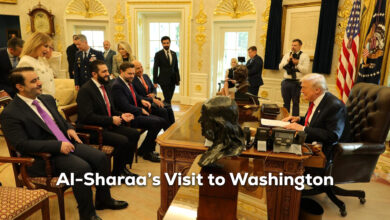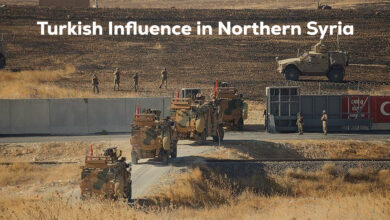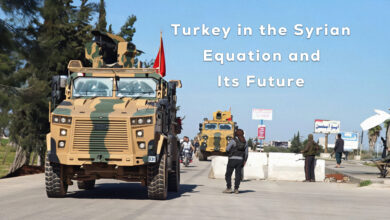
Of course, the Syrian issue is tied to international policies and their conflicting projects in the region. The regional countries that witnessed the Arab Spring waves and got involved in it have no solutions other than recycling their authoritarian systems and denying rights, whether to their people or to the nationalities and minorities that found themselves under international agreements, including the Lausanne Agreement of 1923, within the borders of these countries, such as the Kurds, the Amazigh, and others. As for the major powers, the Syrian crisis is part of the general crises afflicting the region and the world, whether the Russian-Chinese-American conflict over influence and the nature of the emerging world order, or the ongoing war in Ukraine as a “bone-breaking” war between Western American hegemony in the world order and Russia seeking to return as a second pole in the world, supported by comprehensive and dictatorial regimes like Korea, China, Iran, and Turkey on the other hand. These powers have different visions for solutions in Syria.
Russia and its allies do not want a democratic change in the region that would inevitably affect their own systems; therefore, they seek to maintain the status quo and work to restore the situation in the region to pre-Arab Spring waves that began in 2010-2011 as if nothing had happened.
As for the Western powers, they realize that it’s impossible to maintain dominance and security in the Middle East, given the past models of governments and the nature of individual, family, and inclusive national states. That’s why they seek to impose an alternative model by dividing countries internally without touching international borders, whether in the form of federations or autonomous administrations. This is to limit these countries and control them, as central governments have become obstacles to Western projects and contribute to the escalation of their general crises.
So according to the conflicting projects of the major powers, the model that will prevail is the model of the forces that impose their victory in the Ukrainian war, which is not really a local war or confined between two conflicting countries, but rather a third world war that is being managed within a specific geographical framework; as a result of the size and quality of the deadly weapons that, if the battlefield expands, could lead to the destruction of the world. It seems that Russia will not be able to emerge victorious; therefore, the Western or American model of the solution will be prevalent in the Middle East, including Syria.
As for the Democratic Self-Administration as a solution for all of Syria, it is primarily linked to the extent of compatibility between the concept of democratic nation as a model solution for the Middle East and the Western vision that resembles the concept of democratic nation in the concepts of self-administrations and federations as concepts, but they differ in terms of the content and essence of these concepts. However, as a result of the self-administration gaining legitimacy as a comprehensive democratic concept for all components in the region, alongside military successes against terrorism on the ground, turning it into an active partner within the international alliance and the main forces in imposing security and stability in the region, confronting terrorist expansion and Iranian expansion in Syria, and managing the region through its civil institutions (service, economic, social) alongside the distinctive role of women in the social, political, economic, and military aspects of life, it has proven to be the best model for a solution in all of Syria. Many Syrian regions now call for emulating the self-administration even militarily in confronting terrorism. The self-administration of northern and eastern Syria is the closest model to a solution in Syria and can be generalized through the formation of self-administrations in different regions, even if they are fundamentally different from the essence of self-administration in northeastern Syria, but they are not conflicting with it in general.
So, self-administration in northern and northeastern Syria (Rojava) has actually become a model for a solution in Syria as a whole, after other solutions, whether Russian, Iranian, Turkish, or even the so-called Syrian opposition, have become ineffective solutions; because they offer solutions linked to the agendas and interests of these countries and do not offer solutions that are in favor of the Syrian people in general. At the same time, the self-administration imposed itself as a solution model through the practical application of the concept of democratic nation as a unifying national model that is relatively accepted internationally and gradually accepted internally. The calls of the popular movement in Al-Suwayda to form a similar self-administration are nothing but an expression of the beginning of gaining acceptance for the model of self-administration in northern and northeastern Syria internally and as a model for a solution to the Syrian crisis.




